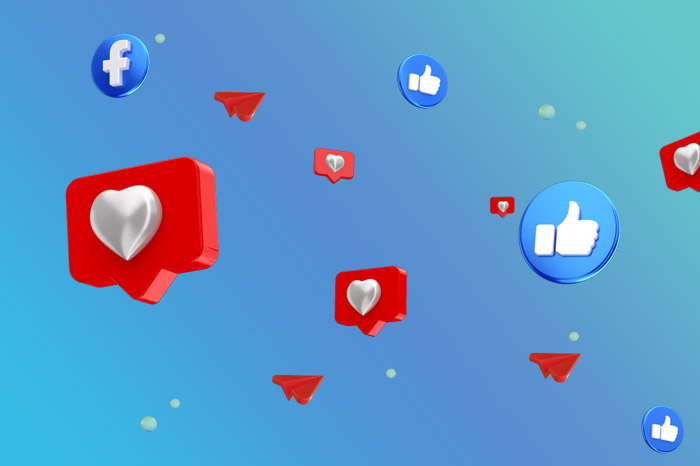How much does it cost you to show your products or services to your ideal customer? Whatever digital or physical marketing channel you invest your time and money in, with remarketing, you can increase your chances of converting someone who came in touch with your brand into a customer at the lowest possible cost.
Let’s make it clear.
The first time visitors enter your website, they will likely not make a purchase or contact you. Only 2-5% of consumers buy instantly once interacting with one of your ads. The 95-98% of internet users intending to proceed to purchase passes through some main stages:
- Recognize that they have a problem or a need.
- Search online for information.
- Compare.
- Decide.
- Purchase.
- Have their first experience using your products or services, which determines their future relationship with your brand depending on whether they were satisfied.
It is the so-called “customer journey”. If you can be present at each step of this journey, then you will possibly see the conversion rate (percentage of converting into customers) of your marketing actions increase.
So, to be present, you need to create a conversion funnel encouraging the users to make this journey by directing them at every stage and bringing them back to your brand.
What is remarketing
Remarketing is the strategy of reminding existing or potential customers of your brand depending on the digital or traditional marketing channel through which they come in contact with your products and services.
How important is remarketing?
Remarketing not only reminds your visitors of your brand but also can make it easier to move to the next step in the conversion funnel. Also, it can be helpful to reduce shopping cart abandonment by showing the product that the user added to the cart but left the website without purchasing.
Remarketing vs Retargeting
Remarketing and retargeting are not the same things. Retargeting is a subcategory of remarketing. Sounds difficult?
Simply put, remarketing is more about communicating with the same potential customer multiple times –either digitally or traditionally- while retargeting shows online ads repeatedly to the same visitor.
This confusion was caused and established by Google when in 2010 introduced the ad retargeting system and called it “the remarketing tool”.
How to do Remarketing
Remarketing includes all your actions to remind your customers and potential ones of your brand. It includes all digital marketing techniques, e.g., showing someone the same banner multiple times until clicking on it, to a sign outside your physical store that someone sees every morning when going to work.
So, the main options you have in remarketing are:
- Retargeting
- Social Media
- Phone
- Offline -traditional- marketing (signs, flyers, radio, tv, etc.).
1. Retargeting
Retargeting using technology seeks to re-interact with your website’s previous visitors. Approximately 95-98% of your visitors leave it without dropping their email, contacting you, following you on social media, or purchasing your product/service. Retargeting allows you to bring them back again in touch with your brand by placing a snippet on your website, the so-called pixel.
A retargeting pixel places a cookie inside the visitors’ browser to get stored their information in your account (Google Analytics or Facebook). In this way, you can display ads, especially to those who have previously visited your website. Retargeting ads have 10 times the CTR (Click-to-view Ratio) since the user already knows you.
The 2 most popular platforms for retargeting are Google and Facebook. See how to set up a retargeting campaign on Google, and also a retargeting campaign on Facebook.
Important: What has changed and may be difficult for everyone involved in retargeting ads is that the 3rd party cookies are being disabled. Simply put, you cannot target specific customers with the most personalized ads possible, but only groups of people with the same characteristics.
2. Social Media Remarketing

Remarketing in social media targets exclusively your loyal audience, contrary to traditional social media marketing, which targets the general audience to which you would like to introduce your brand.
In essence, social media remarketing campaigns aim to bring back over and over again those who already have an experience with your brand. It is much easier and cost-effective to sell something to someone who already knows you or has bought something from you. Some illustrative examples:
- Contests for loyal customers.
- Discount if someone takes a specific action (such as following you on another social media channel).
3. Email remarketing
Every email you send to customers or potential ones is a remarketing email. Regardless if it is a newsletter, a reminder email, an upsell email, etc., it aims to bring the user target back in touch with your brand.
Especially in eShops, the shopping cart abandonment email is the most targeted approach to email remarketing. Of 30% of people visiting eShops and adding something to their cart, only 3% of them complete the purchase. It means that up to 27% of your potential customers leave right before the purchase. A simple reminder maybe can make even half of them complete their purchase.
It explains why many times when you visit an eShop, the first thing shown to you is a pop-up asking for your email and to subscribe to the newsletter, usually offering a 5% discount on your next order. So, not only will you receive newsletter emails, but also they can contact you in case you forget something in your cart.
To do the same on your website, you need only an automation tool that does the job for you automatically. While there are many tools available out there, you can take a look at MailChimp.
4. Phone
Remarketing by phone is not something new. If you are a bit older, you will probably remember being stopped by salespeople in supermarkets or even on the street to fill in your contact details in a form and take part in the contest of the “x” company, or benefit from a discount offered.
It is still happening today, whereas it is more digital. You fill in your phone number in an online contact form for a reward or no reward at all. If someone gives you contact information willingly, it is an excellent opportunity to get in touch and eventually sell your product or service.
Attention: do not be importunate and do not forget your customers after the sale. A call a few days later to make sure that they are satisfied will probably turn them into loyal customers.
5. Offline remarketing
It is quite clear that offline remarketing includes all remarketing activities taking place offline. It needs no introductions or tedious oversimplifications. Look at the following examples and start today with the most directly applicable offline remarketing option for you:
- Business card
- Flyers
- Promotional gifts
- Promotional coupons
- Gift cards
- Customer Loyalty Program
- Promotional signs
- Sponsorships
- Charity project
- Organizing events
- Participation in exhibitions
- Advertising on radio or television
- Anything that can make you stand out from your competition. Offline marketing has huge potential if you let your imagination run free or contact an agency.
Conclusion
As you notice, remarketing is not just about Facebook and Google. Its potential and the opportunities it can create to increase sales and brand awareness are limitless.






Join the Discussion